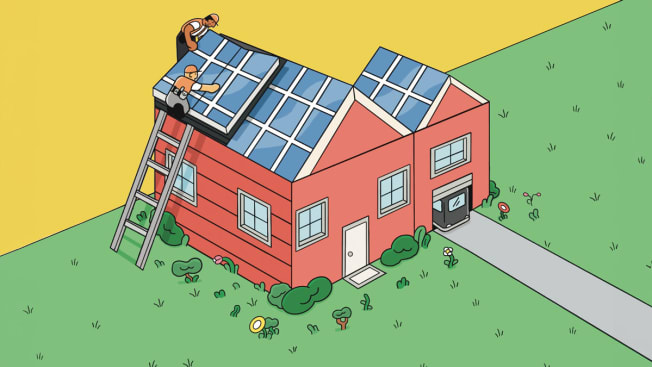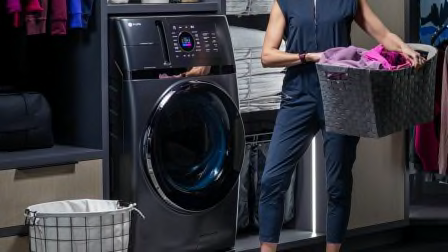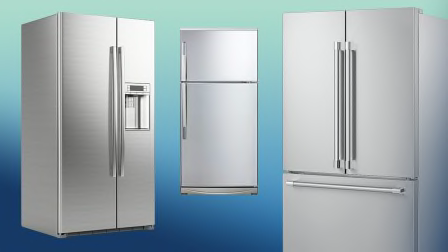Big Home Energy Upgrades That Pay Off
The up-front costs can be daunting, but investing in new energy technology now can save you big bucks in the future

Major energy improvements like installing a heat pump or adding solar panels to your roof promise significant long-term savings. But they also require a hefty investment up front. How then, can we hedge against rising energy costs tomorrow without breaking the household budget today?
And those costs are expected to rise, especially if more action is not taken to reduce the effects of climate change, according to a report by the consultancy ICF and commissioned by Consumer Reports. That investigation found that energy costs could total $88,000 over the lifetime of a child born in 2024, the result of higher gas and electricity prices as well as the need for more energy to keep homes comfortably heated and cooled.
But what can be done now to curb energy costs in our own homes?
Before investing in big new systems, focus first on less costly upgrades, experts say. Sealing leaky ductwork or laying fiberglass insulation batting in your attic will improve your home’s comfort and trim energy bills immediately. It could also lower the needed capacity (and price) of larger energy-saving projects such as that new HVAC system or solar array that you’re considering. For homes in some climates, “envelope upgrades” can shave up to $3,700 off a heat pump installation, the Department of Energy says.
Once you’ve done everything you can to lighten your energy load right now, consider the long-term energy investments below. Read on for the intel you need to decide what’s right for your home and budget.
What to Know About Heat Pumps
An electric heat pump heats and cools your home like a combined furnace and central air conditioner. It’s efficient, which can help trim your energy bills. And installing an electric heat pump in place of a fossil-fuel-burning furnace can recoup nearly 104 percent of its cost at resale, according to the Remodeling’s 2023 Cost vs. Value Report, which used results from a 2023 survey of real estate agents by Zonda Media, a building-trades publication. The report estimated a cost of $17,747, on average, nationally, although surveys of CR members who purchased heat pumps between 2018 and 2023 reported paying an average of $8,348 for them, including installation.
Choosing the Right Heat Pump
The type of heat pump system you buy will depend on how your HVAC system is designed. If you have central AC, your home already has ducts that a new, ducted air-source heat pump can use for cooling and heating.
If you don’t have ducts, opt for “mini-splits,” air handlers mounted on inside walls and connected by external piping to a unit housing a condenser, fan, and compressor. Installing one mini-split costs $3,000, on average, says HomeAdvisor, a home-services marketplace.
To ensure comfort, make sure the recommended heating and cooling capacity your installer recommends is based on a recognized method, such as the one found in the Air Conditioning Contractors of America’s “Manual J.” To save money, ask installers about seasonal promotions, manufacturer and installer rebates, and discounts for paying in cash. Compare loan terms from the contractor or manufacturer with those from other lenders.
If you’re spending a lot on a system, it should work well—and keep working. CR’s heat pump brand reliability ratings, below, are based on surveys of CR members about their experiences with 10,158 heat pumps purchased new between 2007 and 2023. And for more, in-depth information about choosing a heat pump, check out CR’s heat pump buying guide.
What to Know About Solar Panels
They do have a hefty up-front cost. Most households need 11 kilowatts to cover their electricity needs, according to EnergySage, an alternative energy marketplace. After a 30 percent federal tax credit, the average cost to install a system of that capacity is $22,022. But over time, you can save tens of thousands of dollars on your energy bill. EnergySage estimates savings of $20,000 to $90,000 over 25 years. Plus, the market value of a home with solar panels could rise slightly due to the upgrade, a 2021 study by government researchers found.
Though leasing solar can in some cases require no money down and offer instant savings, it’s typically a worse long-term deal than buying, EnergySage maintains. That’s due in part to the interest costs and finance fees; you also may face payment increases. Because you don’t own the system, you also won’t get a tax credit. The 2021 study found no increase in home value from leased solar.
Not sure how large a system you need or can afford? Plug your address and average monthly electric bill into the calculators at Google Project Sunroof or EnergySage. You’ll see how big a system your home can handle, your break-even point, and potential savings.
Factor in a roof inspection plus the estimated cost to repair and replace roofing shingles that are more than 10 years old, says the roofing maker Owens Corning. Asphalt roofs and solar panels can last up to 30 years, so buying both new at the same time means you won’t have to remove and reinstall the panels to redo your roof, a potentially costly expense. If you have a homeowners association, check for restrictions on solar installations.
Solar marketplaces like EnergySage and SolarReviews are useful tools for comparison. EnergySage can show competing bids from solar companies for your situation without requesting your phone number. EnergySage and Solar Reviews also judge the quality of solar equipment. And both rate and show customer reviews of installers.
As you consider solar companies, you might see references to “price [or cost] per watt.” Like supermarket unit pricing, that figure can help you compare the relative price of bids. “But other characteristics of the project—equipment quality, warranty, installer reputation—are better indicators of overall value,” says Spencer Fields, director of insights at EnergySage.
Other Measures to Consider
Annual production: Proposals may show panel configurations with different estimates of production—from, say, 100 to 137 percent of your current needs. Excess power could be worthwhile if you plan to buy an electric car, for example. But don’t get a system that’s too big.
Power degradation: The best panels degrade at 0.25 percent of their original capacity per year, still producing around 92.5 percent of that capacity after 25 years, Fields says.
The installer’s bona fides: Look for several years of experience. Ask for proof of licensure and confirm certification by the North American Board of Certified Energy Practitioners. Check for complaints with the Better Business Bureau.
A ‘Cool Roof’ Can Also Help You Save
If your summer cooling costs are high and your roof is old, consider replacing it with a “cool roof”: shingles, tiles, or metal roofing designed to reflect (rather than absorb) solar energy. By reducing attic temperatures, these products can shave 7 to 15 percent off cooling costs, says the nonprofit Cool Roof Rating Council. In Arizona, where average annual cooling bills are more than $650, that’s a potential savings of nearly $100 a year. In the council’s Rated Roof Products directory, the higher the solar reflectance index, the more effective the roofing is at keeping your home cool.
Tax Breaks for Energy Upgrades
There’s more good news when it comes to making big energy upgrades less expensive. Taxpayers can claim robust federal tax credits for certain home improvements made through 2032, up to 30 percent. Check the Energy Star program’s website for details on the energy-saving products and activities that qualify. And keep these credits in mind:
• The Residential Clean Energy Credit covers alternative energy equipment, including solar panels and storage batteries. Systems of any price and taxpayers of any income are eligible. You can carry over unused credit in future years to offset taxes owed.
• For exterior doors, windows, skylights, insulation materials, central air conditioning, water heaters, and furnaces, the Energy Efficient Home Improvement Credit maxes out at $250 to $1,200 per item, depending on the upgrade. You can also get up to $2,000 for air-source heat pumps and biomass stoves and boilers, and up to $150 for home energy audits. You can claim the credits annually through 2032 for eligible improvements.
Editor’s Note: This article also appeared in the May/June 2024 issue of Consumer Reports magazine.





















